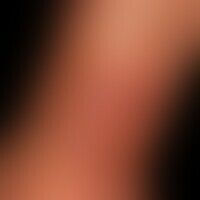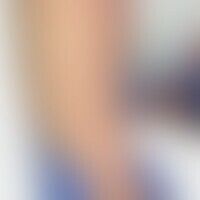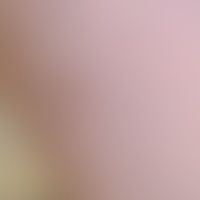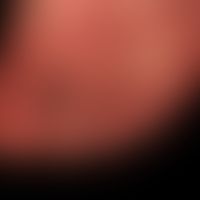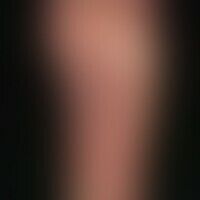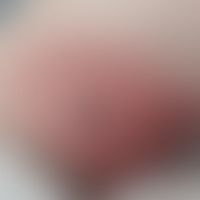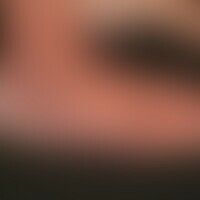
Acrodermatitis chronica atrophicans L90.4
Acrodermatitis chronica atrophicans. Clearly visible, flaccid skin atrophy and edematous redness on the right foot in a serologically proven infection with Borrelia bacteria. The patient spends several months every summer in the Black Forest.
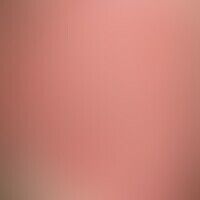
Bullous Pemphigoid L12.0
Pemphigoid, bullous. detail enlargement: multiple, originally tight blisters, which have largely emptied and are localized on flat erythema. in some blisters the bladder roof has already completely detached, therefore multiple small erosions and crusts are visible.

Necrobiosis lipoidica L92.1
Necrobiosis lipoidica: different clinical sections. frontal, large, little indurated, slightly reddened plaque with atrophic surface. lateral a 3.5 cm diameter medal-shaped plaque with a slightly marginalized edge.
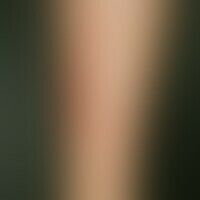
Erythema nodosum L52.0

Hypertrophic Lichen planus L43.81
Lichen planus verrucosus: Itchy (see scratching effects with crust formation),verrucous plaques on the left lower leg that have existed for years.
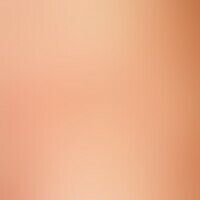
Larva migrans B76.9
Larva migrans, detail: Garland-shaped, tortuous, erythematous, partly scaly plaque on the right foot back of a 35-year-old patient after a bathing holiday in Thailand.
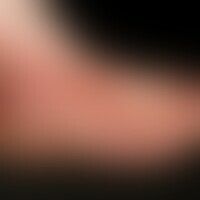
Lichen planus ulcerosus L43.8
Lichen (ruber) planus ulcerosus: extensive infestation of the feet with verrucous and crusty deposits and therapy-resistant deep ulcers with rough edges.
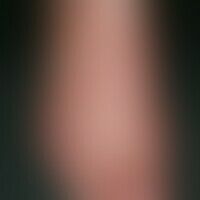
Dermatitis contact allergic L23.0
Dermatitis contact allergic: Chronic recurrent, massively itching, disseminated red papules and papulo vesicles confluent to blurred plaques. maceration of the 4th CRC. The skin lesions were caused by application of a cream containing gentamicin.
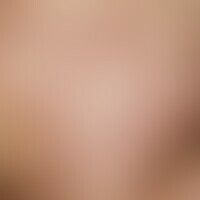
Varice reticular I83.91
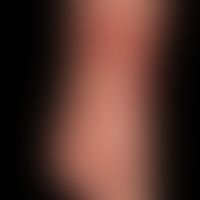
Erythema nodosum L52.0
Erythema nodosum: acute, multiple painful indurated plaques and nodules, accompanied by arthritis of the right ankle.
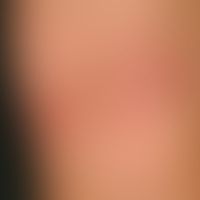
Atopic dermatitis (overview) L20.-
flexural atopic eczema. skin lesions in a 13-year-old girl with intermittent course since the age of 4 years. positive FA; EA: pollinosis known. in the area of the hollow of the knee blurred, reddened, slightly scaly, moderately itchy plaques. skin field coarsened (lichenification). classic finding of flexural eczema.
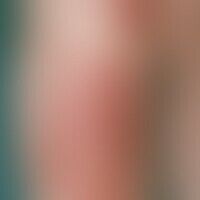
Erythema nodosum L52.0
erythema nodosum. multiple, blurred, very pressure painful, doughy, slightly raised, reddish-livid lumps. fever, fatigue and rheumatoid pain also occurred.
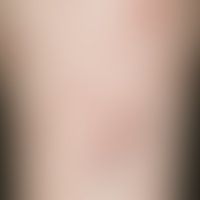
Lichen planus classic type L43.-
Lichen planus classical type: linear arrangement of confluent papules (Köbner phenomenon)
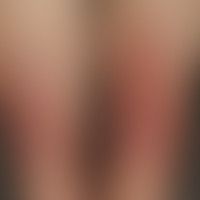
Bubble
Subepithelial blisters: traumatic, subepithelial blisters in insulin-dependent diabetes mellitus.
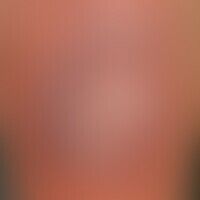
Pyoderma gangraenosum L88
Pyoderma gangraenosum. chronic progressive, painful, large-area, blue-reddish, slightly raised, approx. 5 x 4 cm large, ulcerated plaque with painful marginal zone and dark red-livid rim on the lower leg of a 36-year-old female patient with ulcerative colitis. on pressure emptying of pus and blood.
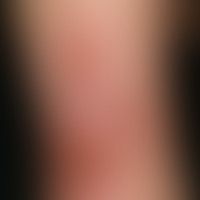
Arterial leg ulcer L98.4
Ulcus cruris arteriosum: very painful ulcer that has existed for about 1 year, is extremely resistant to therapy, sharply defined, as if punched out, and is known to have a history of smoking with PAVK.
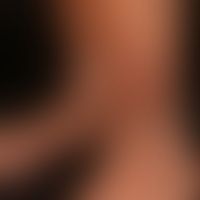
Pretibial myxedema E03.8
Myxoedema pretiabiales: circumscribed, blurred, yellowish-reddish, firm, hardly compressible, otherwise symptomless swellings; here a partial symptom of Graves' disease; typical is the orange peel-like surface of the swelling.
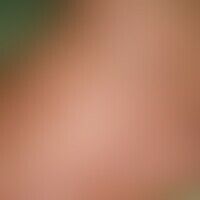
Acrodermatitis chronica atrophicans L90.4
Acrodermatitis chronica atrophicans: Livid red erythema in atrophic skin, shimmering vein network.
